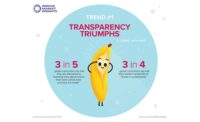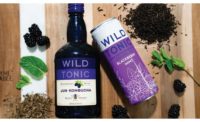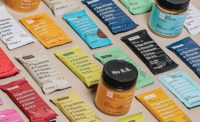2020 PREDICTIONS: BEVERAGES
Imbibe's Top 10 Beverage Trends to Watch in 2020
Next year's beverage trends will be driven by health and wellness, experience-culture, and economics

New Celsius line addresses “hybrid functional” trend, combines energy with muscle recovery ingredients.
PHOTO COURTESY OF: CELSIUS HOLDINGS INC. (WWW.CELSIUS.COM)
Consumer expectations are a fast-moving target that influence innovation within the beverage industry. Brands must be extremely nimble and respond quickly to trends with new or improved products. Next year’s beverage trends will be driven by health and wellness, experience-culture, and economics.
Here are the top 10 beverage trends to watch in 2020:
• Holistic Wellness: Brands will “go back to the basics” by incorporating essential nutrients such as vitamins, minerals, calcium, omega-3 fatty acids, and protein into functional beverages. Mood-boosting and stress-relieving beverages en¬hanced with novel ingredients like adaptogens and cannabidiol (CBD) will be in the spotlight as well.
• Hyper-Personalization: Brands will give consumers more options than ever by offering functional beverages that address specific need states like energy, cognitive performance, gut health and beauty as well as more traditional products and their updated counterparts such as with and without sugar or dairy and plant-based.

Check out our December 2019 issue for more food & beverage predictions!
• Hybrid Functional Beverages: The next generation of functional beverages will include ingredient combinations that address multiple need states like coffee with protein or harmonizing ingredients that help consumers fulfill a specific goal such as an energy drink enhanced with branched-chain amino acids (BCAAs) to improve athletic performance and recovery.
• Better-for-You Bar: “Sober curious” millennials will drive the proliferation of high-end mocktails and low-alcohol beverages. Hard kombucha as well as beers and cocktails enhanced with functional ingredients will appear on more menus and start to appear on grocery shelves nationwide. Hard seltzer will also continue experiencing rapid growth and more brands will enter the category.
• Sweet Options: Sweetener preferences and taste expectations are a moving target that are about to be under even more scrutiny with the implementation of updated nutrition facts panels. Brands will introduce products with multiple sweetener options such as zero sugar, low sugar, and full sugar. Top sugar alternative ingredients will include natural non-nutritive sweeteners like stevia, monk fruit, and allulose and nutritive sweeteners like honey, agave, dates, and inulin.
• Green Rush: Despite complicated regulations and FDA warnings, the CBD market will continue to thrive. CBD is federally illegal as a food additive and in supplements; however, it is naturally occurring in hemp oil and hemp extract which are legal under the Farm Bill. Broad-spectrum hemp extract will be the most common ingredient used in CBD beverages (though many brands are choosing not to call out CBD content because of FDA warnings).
• Sustainability: Brands will improve efforts to create a circular economy by launching products that use upcycled and locally sourced ingredients and eco-friendly packaging. Brands will also continue to add plant-based beverages to their product portfolio and oat milk will be the rising star.
• A Sense of Adventure: Expect launches of beverages that offer an adventurous sensory experience by incorporating global flavors, ingredients with inherently bold colors, and creamy, velvety, and chewy textures.
• Convenience: Launches of ready to drink beverages and wellness shots will increase to satisfy the grab-and-go culture. Brands will also make it easier than ever to obtain a product that addresses a need state or dietary parameter by offering a plethora of options.
• Affordable Luxury: Premiumization of beverages has been on the upswing the last few years, but with a potential recession looming, brands will need to introduce products that are affordable and still meet the taste, quality and functional expectations of consumers.
Originally appeared in the December 2019 issue of Prepared Foods as Bespoke, Basic and Better For You.
Looking for a reprint of this article?
From high-res PDFs to custom plaques, order your copy today!





